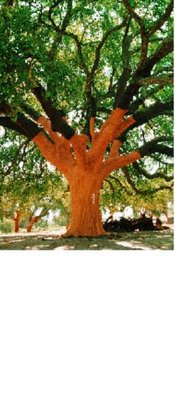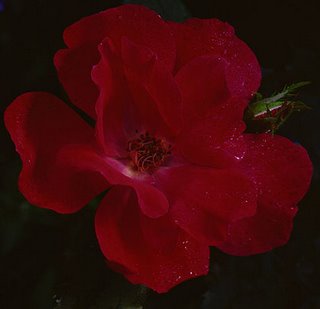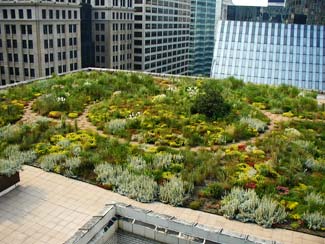Wednesday, May 17, 2006
Alligators Are Nothing To Tangle With
El Salvador Isn't Waking Up And Smelling The Coffee
With the greatest population density and smallest land size in Central America, El Salvador was long ago cleared of virtually all its native forest. Coffee farms, where bourbon variety coffee trees flourish under a thick shade canopy, provide 75 percent of El Salvador's remaining forest cover.Tropical forests that house El Salvador's famed coffee plantations and provide habitat for migrating birds are being depleted at an alarming rate, scientists warned on Tuesday.
Between 2001 and 2004, the country lost 21,025 hectares of forest-covered coffee farms, Mario Acosta, president of El Salvador's Foundation for Coffee Research (Procafe), said. El Salvador last year planted around 161,000 hectares of coffee, the vast majority of it grown on wooded plantations.
"Just in the period between 2001 and 2004, we lost 21,025 hectares with the accompanying environmental degradation, with the problems this means for watersheds and all the problems of unemployment in the countryside," Acosta told reporters at the opening of a regional conference on the role of the coffee industry in the environment.El Salvador: Coffee, US Library of Congress
Coffee Could Save El Salvador's Wildlife
United States Agency For International Development: El Salvador
China's Water Pollution Increasing
China has admitted that measures to tackle "serious" water pollution in the southern booming province of Guangdong are not working, state media reported on Wednesday.
Water quality in both coastal waters and inland estuaries remained poor, the China Daily said, citing Chinese experts.
The drainage of land pollutants to the sea was a key reason for the poor sea quality and poor ecological environment, the China Daily quoted Zhong Jianqiang, an environmental researcher, as saying
Cork Screwed?


Telling someone to put a 'stopper in it' won't have the same effect with plastic twist off caps.
If the Mediterranean cork oak forests are jeopardized, experts estimate that it could result in the loss of 62,500 jobs as well as a habitat loved by the endangered Iberian lynx, the Barbary deer, the black vulture and the imperial Iberian eagle.Up to three quarters of the unique cork oak forests of the Mediterranean could be lost within 10 years because of the increasing popularity of the screw-top wine bottle.
The move away from traditional stoppers made of cork threatens the survival of one of Europe's most important wildlife habitats, according to a study by the conservation group WWF.
If the trend for plastic stoppers and screw tops continues, then just 5 per cent of wine bottles sold in Britain in 2015 could be using corks, the report says.
Portuguese oak forests
World's Largest Cork Tree?
Cork Masters
African Glaciers To Disappear Within 20 Years?

A recent survey shows that the ice field straddling the border between Uganda and the Democratic Republic of Congo now covers less than a single square kilometre. A century ago, it was roughly seven times this size.The Elena glacier is retreating by between 10 and 15 metres each year, says Richard Taylor of University College London, who led the survey. The two images show the extent of the retreat over just 30 months.
Read the full article at Nature.
Harps On The Beaches Becoming Common Sight

An increasing number of young harp seals are straying from their northern breeding grounds and showing up on U.S. beaches, biologists say. Federal researchers say 297 harp seals were reported on beaches from Virginia to Maine last year, almost double the 152 reported in 1995.
The booming arctic harp seal population in Canada, spurred by a hunting ban, and dwindling food sources such as cod are among the reasons being cited.
China Starts "Ride A Bicycle To Work" Day

Beijeng has instituted a "no car" work day to reduce air pollution from automobile emissions.
Environmental officials in Beijing have asked residents to stop driving their cars to work one day a month in an effort to clean up the capital's stifling air pollution and ease traffic jams.
More than 200,000 drivers in up to 100 Beijing auto clubs have agreed to comply with the voluntary request, the Beijing
Environmental Protection Bureau said in a report posted on its website.The campaign to restrict car driving is modeled on a similar program initiated by 34 cities in France, the report said. The effort in Beijing is being made in coordination with a "blue sky day" campaign launched in 1998 in an effort to increase the number of days with good or fair air quality in the years running up to the Beijing 2008 Olympic Games.
Between the beginning of the year and mid-April, the city reported 56 "blue sky days," 16 fewer than the same period in 2005.
What's Your Ecological Footprint?

Have you noticed the televison commercials asking Europeans: "What's your ecological footprint" and their dazed expressions? On Central Florida Yards & Neighborhoods website's Enviromental page, you can find out what your ecological footprint is with cool calculators under Environmental Awareness.
These can help you determine the environmental impact of your activities. If you cannot eliminate or reduce the cause of the pollution, carbon offset services will provide affordable options to neutralize your carbon emissions. Besides ecological footprint calculators, also: calculators for commuting costs, building energy efficiency, solar water heating savings, food chemicals, ...
California Butterfly Species Hits 40-Year Low

One of the world's two largest butterfly data bases showing disturbing trend of reduced butterfly populations.
The number of butterflies migrating through the state has fallen to a nearly 40-year low as populations already hurt by habitat loss and climate change encountered a cold, wet spring, researchers said.
"Some of them were already in decline, but this weather really added insult to injury, kicking them when they were down," said Arthur Shapiro, an entomologist with the University of California, Davis.
Read more about what species are disappearing and why.
United Flight 93 Gets Honorary Rose

Non-profit organization Rose Garden has named a new yellow rose in honor of the passengers and crew of United Airlines flight 93, which crashed Sept. 11, 2001. Named Forty Heroes, the rose was hybridized by Ping Lim of Bailey Nurseries in St. Paul, Minn. It will be available to garden centers in 2008. Rose Garden is dedicated to creating Remember Me rose gardens in New York, Washington, D.C., and Pennsylvania to honor Americans who died during the Sept. 11 terrorist attacks. Forty Heroes is the fourth rose introduced by Rose Garden, following Firefighter, Soaring Spirits and We Salute You.
Japan vs China In The War Of The Flowers

From 1455 to 1487 Britain had the War of the Roses between the House of York and the House of Lancaster. Today, Japan and China are waging the War of the Carnations.
Japanese breeders assert that their precious strains are being grown illegally by Chinese farmers in a grand-scale intellectual property theft tantamount to DVD piracy or fake Gucci handbags.
Japanese Can't Play Chopsticks Any More

Preventing Chinese forests from being taken out affects Japanese take-out.
A restriction that the Chinese government has placed on the production of disposable wooden chopsticks to protect forests is beginning to affect Japanese box lunch companies, restaurants and pubs, industry sources said.
Sri Lanka's water still plagued by tsunami
Nation's Toughest Eminent Domain Law enacted in Florida
The Orlando Business Journal cited that the law requires local governments who acquire property through condemnation to offer to sell the land back to the previous owned if the land is no longer needed by the government entity itself. If the previous owner chooses to not buy it back, then the government has to wait 10 years before it can sell it through a competitive bidding process.
Science in the Garden

I enjoyed reading this week's New York Times' editorial regarding the New York Botanical Garden merging with scientific interests. Will universities and botanical gardens around the world find symbionic common ground?
Read more about the dynamics of horticulture and science.Twenty years ago, the future of the botanical garden was anybody's guess. It could have settled into being a pleasant afternoon outing, a slightly dowdy botanical experience. Instead, it has become what no one quite expected — one of the leading institutions in plant science — and it has done so in a way that has only enhanced the public's enjoyment. Seeing the science behind the garden makes the rest of the garden, the living collections we know so well, seem all the more remarkable.
But the dynamic of scientific research at the botanical garden will change with the official opening tomorrow of the Pfizer
Plant Research Laboratory, which will house programs in molecular systematics and genomics.
British Farmers Facing Extinction With Skylarks
"The decline in the agricultural workforce has been just as dramatic as the decline of skylarks," Soil Association policy director Peter Melchett told a news conference, referring to the British bird whose population has fallen sharply
Tomato Flavor Restores Rose Fragrance

It's easier to stop and smell the roses now, you just have to thank tomatoes and Gators.
Tired of big, colourful roses that hardly smell at all, flower researchers at the University of Florida/IFAS have found the genes to bring back that old-fashioned rose scent that has been accidentally bred out.
Their luck came unexpectedly from the tomato, where they were decoding the genes that give a tomato flavour. A flavour gene in the tomato turns out to be the scent gene in the rose. Now they're hoping tomato genes will make a rose by any name smell as sweet as before.
They say, they may even learn how to make a petunia smell rosy."The old-fashioned ones really did have a nice smell. Breeders looked for bigger flowers, showier flowers -- and they let the scent go by the wayside," says Denise Tieman, a flower scientist at the university's horticulture department.
Monday, May 15, 2006
Humans One Of The Vices To Sloth?

David Steadman, University of Florida researcher is quoted in LiveScience as believing humans were the reason that led the giant sloth to extinction. Steadman thinks that the encroaching boreal forest may have been the final last straw for large mammals in the North. What about the Ice Age?
In 2000, bones of the largest giant sloth was found by an University of Florida geology student in 1986 near Gainesville."There are so many things going on, and to me it's illogical to think that warming up and getting rid of ice sheets at 40 degrees latitude is a bad thing for large mammals," Steadman said. "They went through 20 glacial cycles in the last million years, and got through every one except for the last one. It has a
certain odor to it, and that odor is of humans."
"Weighing more than five tons and able to reach as high as 17 feet, the 2.2 million-year-old prehistoric creature was larger than today's African bull elephants, said UF paleontologist David Webb."Native to South America, Thomas Jefferson was also fascinated by sloth bones that were brought to the White House, commanding Lewis and Clark to "keep an eye out for ground sloths," David Webb said. "He was hoping they would find some living in the Western range."
Back To My Passions

After a hectic week full of meetings, back to working in my garden and blogging. Received for Mother's Day some of the newest sensations on the garden front, Home Run Roses, produced by Weeks Roses. They look wonderfully elegant in my yard. Added a king's mantle thunbergia erecta, ajuga, asiatic lilies, blue salvias to the front cottage garden, burgandy amaranthus to the woodland garden, and more azaleas under the oak tree. Now, lets hope the rains come.
Sunday, May 07, 2006
Florida Coral Species Threatened By Human Activities


Your lifestyle and landscape maintenance practices could be affecting Florida's coastal elkhorn and staghorn corals. These two coral species have now earned a place on the federal threatened list because of the last two decades of weather disasters, more water tourism activities, and increased algae from land-based nutrients, contaminants, and sediments from stormwater runoff and sewer outflows.
Pesticides Found In Snow In U.S. Mountain Ranges
Carcinogenic Pesticides Found In Second Hand Smoke
Wednesday, May 03, 2006
South Carolina County Fined For Stormwater Pollution
The county started a storm-water management program six years ago, but didn’t set up systems to prevent and monitor pollution, said officials with the state Department of Health and Environmental Control.
Tuesday, May 02, 2006
Insects Worth Their Weight In Money
Just In Time For National Water Crisis
Irrigation Association Promotes Healthier Lawns
The association offers
APHIS Confirms Gladiolus Rust In Florida
Source: GMPRO
AARS Names 2007 Rose Winners

AARS names 2007 rose winners All-America Rose Selections named its 2007 selections: Rainbow Knock Out, Moondance and Strike It Rich. Rainbow Knock Out from Conard-Pyle Co. is said to be even more floriferous and disease resistant than its parent, 2000 AARS winner Knock Out. Flowers are deep coral-pink with yellow centers and fade to light coral. Moondance is a floribunda from Jackson & Perkins with creamy-white flowers contrasted by glossy, dark-green foliage. Strike It Rich from Weeks Roses is a grandiflora with deep, golden-yellow flowers swirled with ruby red and a strong, spicy fragrance.
Source: GMPRO
Scientists Verify P. Ramorum In Forests
Source: GMPRO
Monday, May 01, 2006
Pesticides Affect Body Anatomy
Thanks and a hat tip to John.
"Do Bee Do Bee Do" Becoming A Plea

Sunday's Orlando Sentinel article by Tom MacCubbin talks about the dilemma of losing our non-native honey bees reducing pollination in our groves, farms, garden beds. Seems that Britain is seeing the same problem with their honey bees. You can help by creating your own attractive bee garden.
Digging In Garden Helps Arthritis
Friday, April 28, 2006
Another Glitch In Global Warming Discovered
Thursday, April 27, 2006
Survival Of The Species: Coral Reefs
Last year, unusually warm Caribbean waters killed some 40 percent of the coral around the U.S. Virgin Islands and weakened much of the rest. This year, wouldn't you know it, the waters are warming again. "It's impossible to overstate how important this is," says biologist Caroline Rogers. High water temperatures lead coral to kick off the partner algae that give them color and sustenance, leaving them white and frail -- a problem that's hitting reefs around the globe. But one species of coral found in the waters of Hawaii seems to have gotten Darwin's memo about adapting: when bleached, instead of relying on energy reserves, Montipora capitata extends short stinging tentacles and gobbles tiny marine animals called zooplankton. "This suggests there are some corals out there that can survive," said lead researcher Andréa Grottoli, whose study appears in Nature this week. Those other corals were weenies anyway, right?
Florida City To Weed Out UnLicensed Landscape Contractors
“We’ll have a way of identifying all of the contractors,” said Bob Devlin, Marco Island zoning technician.
“That also helps us combat unlicensed contractors if they are here working,” Eric Wardle, city’s chief of code compliance, added.
Some contractors suggested that the city give them stickers to put on the windshields of their work vehicles that would identify them as registered contractors for the city.
Green Roofs Growing In North America

Green Roofs for Healthy Cities released their reports for 2004 and 2005 that indicate a 80% growth in green roof square footage in the United States. Green roofs also known as eco-roofs, vegetated roofs covered 1.3 million sq. ft. in 2004 and grew to 2.5 million sq. ft. in 2005. Cities with the most green roofs include Chicago, Washington, D.C., New York, Austin, Texas and Des Moines, Iowa.
Green Roofs For Healthy Cities' mission is to increase the awareness of the economic, social, and environmental benefits of green roof infrastructure across North America and rapidly advance the development of the market for green roof products and services.
State Rain Sensor Ordinances Growing
Gardening Trends Up and Down
Meanwhile, according to Bruce Butterfield, Nat'l. Gardening Assoc.'s research director. Sales in trees and shrubs," declined from 2004 to 2005. Households purchasing flowering trees and shrubs fell from 12.3 million in 2004 to 9.1 million in 2005. Evergreen or leafy shrubs were sold to 6.4 million households in 2005, down from 9.8 million in 2004.
Is this an indication of smaller landscapes, frustrated homeowners, or natural disasters affecting the homeowner's desire to landscape forced to turn their focus to clean up and rebuilding?
March '06 home sales were up with building material and garden equipment and supplies dealers making the biggest strides last month with a 17.4% unadjusted year-over-year increase.
Wednesday, April 26, 2006
How far can you drive on a bushel of corn?

Interesting article in Popular Mechanics on crunching the numbers on alternative fuels. Check out the Fuel of the Future Alt-Fuel Rally which could be used as a great brochure/print out for classroom studies.
Thanks and a hat tip to John for sending.
Is Water Conservation Message Getting Out There?
State officials haven't taken a hard line against water wasters despite water shortages in some parts of the state, including Central Florida.What other strategies are being developed to insure an alternative water source? Read more here...In 2002, on the tail end of a fierce four-year drought, a statewide task force created a shopping list of water-saving measures -- everything from asking farmers to catch rainwater in cisterns to hiring a new army of inspectors to nab people violating lawn-watering rules.Although many of the ideas are implemented in piecemeal fashion around the state, none of the 51 recommendations spelled out in the Florida Water Conservation Initiative has become a state law with tough enforcement.
"I know people joke about how slow government is, but it's been four years," said Doug Shaw, a University of Florida hydrologist and Florida's director of conservation science for The Nature Conservancy."It seems the government has taken a torturously long path on this," he said. "Where did all the recommendations go?"
Wal-Mart, Red, White, & Blue, & Green?
For many enviros, the name "Wal-Mart" has always triggered a shudder. The world's biggest retailer has been charged with exacerbating suburban sprawl, burning massive quantities of oil via its 10,000-mile supply chain, producing mountains of packaging waste, polluting waterways with runoff from its
construction sites, and encouraging gratuitous consumption. (And those are just the environmental complaints.)But it's precisely Wal-Mart's size and reach that could make it a powerful force for good for the planet, say market observers and a growing number of activists. The company controls so much of the retail market, and has such sway over manufacturers, that any green initiatives on its part have huge ripple effects. And it's certainly CEO H. Lee Scott's intention to make waves.In October, Scott announced a preposterously ambitious goal to
Is Wal-Mart engaging in a huge environmental wave of good marketing or are they serious? What could the impact be? Read Amanda Griscom Little's interview with the corporate giant.
transform Wal-Mart into a company that runs on 100 percent renewable energy and produces zero waste. Since then, he has impressed greens with specific commitments to cut the corporation's greenhouse-gas emissions by 20 percent over
the next seven years, double the fuel efficiency of its truck fleet within 10 years, reduce solid waste from U.S. stores by 25 percent in the next three years, and double offerings of organic foods this spring, selling them at prices more affordable to the masses.
Water Warriors
Your Own Personal Message Plant
National Dark-Sky Week
Speaking Of Orchids

The largest orchid show in North America with over 50,000 orchids, the 26th Annual International Orchid Show was held recently in Rockefeller Center. Exhibited in 25 major categories , some of the orchid growers have patiently waited and trained for 6 years to display their prize specimens.
Monday, April 24, 2006
Orchids: Winners and Losers in Global Warming


The benefits of global warming have increased the numbers and frequency of occurrence of British wild orchids in the last twenty years. A study by the Botanical Society of the British Isles (BSBI) has found that the bee orchid and the pyramidal orchid have virtually doubled in frequency since 1987. The study also found that one rare orchid, the lesser butterfly orchid has declined over 50 percent, although there is no proof that the cause is global warming.
Sunday, April 23, 2006
Indonesia's Pristine Forests In Danger
"A handful of logging companies have wiped out much of Indonesia's forests. They must be stopped from finishing off our last intact forests in Papua," Emmy Hafild, from international environment group Greenpeace, told a press conference here.
She said that the government must put in place "a moratorium on large-scale commercial logging activists" in the intact forest landscapes of Indonesia, starting with Papua.
A large swathe of Papua's forests - where researchers recently discovered dozens of new plant and animal species - have already been allocated to logging companies that export timber to Japan, China, the European Union and the United States, said environmentalists.
"More than a quarter of forests in Papua have been sold off to logging companies," Christian Poerba, from Forest Watch Indonesia told the same press conference, pointing out that the logging concessions were for periods of between 20-30 years.
Scientists from Conservation International last December found a virtual "lost world" home to dozens of new species, including frogs, butterflies, and an orange-faced honeyeater bird in Papua's remote Foja mountains.
Greenpeace feared that "large-scale commercial logging is about to cut through the rainforest 'Eden' in Papua," the group said in a statement issued at the press conference. Indonesia has already lost 72 percent of its intact forests, and deforestation rates in the archipelago are among the highest in the world, Greenpeace says.
Greenpeace said the world's forests were in "critical condition" with less than ten percent of the earth's land area covered in intact forests.
Saturday, April 22, 2006
This Earth Day We Need To Protect Our Trees More
Thursday, April 20, 2006
Ant Navigation Tactics Help Technology
That's what ants have to do. Now and then they must visit their nest to avoid losing their way on foraging trips. Now scientists are using this understanding to make better robots. Find out what they do in this study from the Study of Experimental Biology.
Sierra Club Founder, John Muir has his day
Wednesday, April 19, 2006
Plains Likely To See Drought This Summer
Bill Wood, Douglas County’s agriculture agent for K-State Research and Extension, said the lack of moisture in the soil was causing local farmers to brace themselves for the possibility of poor crop yields.“Right now, it’s looking kind of scary,” he said.
The forecast comes as a research group headquartered at Kansas University is preparing to launch a $9.25 million project aimed at predicting large-scale environmental changes such as the Dust Bowl. The grant, announced Monday, will link researchers at KU, Kansas State University and Fort Hays State University in a study of environmental changes along the Kansas River basin.“If we would have had this grant with the equipment and the computational power … before the Dust Bowl, we would have been able to predict that the Dust Bowl was coming,” said Leonard Krishtalka, director of the KU Natural History Museum and Biodiversity Research Center, the lead researcher on the project.
The three-year grant was awarded to the Kansas NSF Experimental Program to Stimulate Competitive Research. It comprises $6.75 millionfrom the National Science Foundation and $2.5 million from the Kansas Technology Enterprise Corp. Owner Steve Wilson has recently heard a few customers make reference to the Dust Bowl days. But overall, it’s not the greatest topic of concern.
“They’re probably still more concerned with high fertilizer prices,” he said.
Rain, Rain, Come again
Tuesday, April 18, 2006
China to use artificial rain to settle dust storm
Jobs That Save the Earth
Monday, April 17, 2006
Dead Sea Is Dying
US To Reposition Satellite Over Amazon
A Rose From Heaven
The collection includes a Pope John Paul II bareroot rose and solid, cast aluminum marker to place alongside the planted rose in your garden. You'll also receive an embossed keepsake portfolio, which holds a signed and numbered certificate of authenticity, a full-color photograph of the rose and one of the
late Pontiff’s homilies. A special collector's item, this limited edition package also makes a wonderful gift.Ten percent of this rose's net sales benefit the poor of sub-Saharan Africa, one of the late Pontiff's closest concerns.
Saturday, April 15, 2006
Rain barrels can save a rainy day
Nutria found in Seattle, Washington

A water-loving rodent native to South America that has destroyed thousands of acres of wetlands in the southeast has been spotted near Lake Washington. Nutria are semi-aquatic, chocolate-colored rodents that can weigh more than 20 pounds and eat one-quarter of their weight a day in crops and plants of all varieties. Also called coypu, or swamp rats, they burrow through marshes and levies, and females can produce more than a dozen offspring a year. Read about the Invasive Species Council created to track and develop methods to remove these rodents and other exotic invasives. How did nutrias come to US?
Inaccurate blame for missing head leads to inaccurate identification
But vets at the Scottish Agricultural College say the body was intact when it was recovered from the harbour at Cellardyke. Barti Synge, the SAC's veterinary services group manager, said yesterday that he did not understand why some officials had sought to blame the delays on the absence of a head.
"My information is that it did have a head but it was difficult to identify in terms of species because it had been predated," he said. "I don't know where the suggestion came from that it did not have a head. It didn't come from us. We were just unable to identify it with any certainty. The fact that it's a whooper is a minor detail and there certainly hasn't been any cover-up."
Earlier this week Ross Finnie, the Scottish environment minister, said DNA tests on the bird had shown it was a whooper, which had probably flown to the UK from Iceland, Russia or Scandinavia.
Officials said the failure to correctly identify the bird until a week after it was first confirmed to have the H5N1 strain of bird flu had made no difference to risk assessments or to measures monitoring birds for the virus.
A spokesman said the bird had been hard to identify, and had to be tested twice.
Friday, April 14, 2006
Disappearing Saguaros and Xeriscaping in Arizona has its downside
Two years ago, concern about disappearing desert in Pima County led to the passage of a $174 million bond issue to buy open land for conservation and to a plan to cluster development in less environmentally sensitive areas.Some cities are beginning to offer homeowners and businesses financial incentives for pulling up lawn and putting in approved low-water-use plants. The city of Scottsdale, for example, recently began a successful "turf removal rebate" of 25 cents a square foot, up to a maximum of $1,500.
But xeriscaping has had unintended consequences. Nonnative African grasses introduced for drought-tolerant landscaping have begun to invade desert areas. Last year was the state's biggest fire season, fueled in part by invasive grasses, said Travis Bean, a research specialist at the University of Arizona's School of Natural Resources.
Thursday, April 13, 2006
Tony Avent, Nurseryman Extraordinaire
Visiting his nursery during a tour last summer at the National Garden Writers Association conference, I was delighted to find Florida native plants there along with flowers that I would disappointly never find in any Florida nursery. I couldn't stop taking pictures of all the lovely flowers and ornamentals. Tony's love of naturalism takes him around the world in search of more horticultural rarities.
Last week, the NY Times article featured Tony's talents and own philosophies and thoughts of the nursery industry. A video garden tour is also available. You may have to subscribe, but it's free.
If you haven't ordered Plant Delights Nursery's catalog famous for its' front covers, check them out.
Wildfire season will be hot this year
"The entire Gulf Coast, from bone-dry South Texas to all of Florida, is at higher risk (of wildfires) in part because a La Niña weather pattern has deprived the southern one-third of the continent of its normal parade of winter and spring storms. Relief in the form of thunderstorms may not take hold until June. Vast tracts of trees blown down by Hurricanes Katrina, Rita and Wilma and vegetation killed by saltwater storm surges means more fuel for fires."
Look up - today we have the Pink Moon
Wednesday, April 12, 2006
Justifiable Homicide in Florida

From Lucianne.com comes this great picture of what could happen if you go crazy with your lawn ornaments.
Prediction: Earth will lose 25% of species by 2050
A scientific report released today predicted that 25% of the world's plant and vertebrate animal species will be extinct by 2050.
Biodiversity hotspots are some of the richest and most threatened biological pools on Earth. They contain 44 percent of plant and 35 percent of the Earth's vertebrate species on only 1.4 percent of the Earth's land. Each hotspot contains its own set of unique species. "Climate change is rapidly becoming the most serious threats to the planet's biodiversity," said Jay Malcolm, an assistant forestry professor at the University of Toronto.In the most dramatic of the scenarios, for which carbon dioxide levels grow to double that of today's levels, the models forecasted a potential loss of 56,000 plant species and 3,700 vertebrate species in the hotspots.
Environmental educators have the world on the shoulders to get the message out to help preserve our resources by having the best management practices.
Growing a better spring
Be a safe gardener
Turf Warrior
A hat tip to Amy.
Speaking of edible plants
 Food Network has a great question of the week.
Food Network has a great question of the week.What are fiddleleaf ferns?
The answer: Fiddlehead ferns are tightly coiled fern frond that resembles the spiral end of a violin (fiddle). They have a rich, deep green color and are about 2 inches long and 1 1/2 inches in diameter. They have a flavor akin to an asparagus-green bean-okra cross and a texture that's appealingly chewy. Fiddlehead ferns are a good source of vitamins A and C. Enjoy Emeril's New Orleans-inspired dish of Fresh Fiddleleaf Ferns, Crawfish and White Bean Ragout.
The picture of fiddleleaf ferns taken by Rich Frenkel.
Feel like munching?
Once in my early days while doing a landscape consult, I was admiring a wonderful herb garden and bent down to pluck some wonderfully green chive-looking leaf and popped it in my mouth. Immediate I knew that this was a poisonous plant and that I made a big mistake. Not wanting to panic or show my complete idiocy at eating something I shouldn't have, I kept on talking and walking with the homeowner through her yard for about ten minutes, all the time thinking... "I'm going to die right here in this person's yard." I could see the headlines, "GARDEN EXPERT DIES WHILE ON THE JOB DOING SOMETHING STUPID".
While my tongue stung and my throat was closing up, I asked the homeowner what was that plant coming out of her ground next to the herbs. She answered innocently, "oh those are my daffodils, aren't they wonderful?" Daffodils are poisonous.
Quietly choking, I thanked her and nonchalantly cut the consult short and got in my car. I called Anna, the Master Gardener secretary and told her if I died before I got to the hospital what the problem was. I swore her to secrecy. Well, within ten minutes while driving back into town, my mouth settled down. I had something carbonated to drink and felt better. I didn't go to the hospital and I didn't die... but I could have been very sick or had severe consequences.
Don't plant edible plants next to poisonous ones. You never know what kind of expert 'idiot' will walk through your yard.
Mistaken swan identity in Scotland poses risk
Nature produces the world's strongest glue
Tuesday, April 11, 2006
Protein factories from plants, insects, and bacteria
Dammed if you do, dammed if you don't
With the tragedy of Hurricane Katrina's effects on the New Orleans' levees still fresh on our minds, comes this New Zealand Herald reporters' first hand view.
"Environmentalists view the Three Gorges dam in China, the world's biggest, as a monstrous natural catastrophe waiting to unleash itself on the hundreds of millions of people who live near the Yangtze River. The Chinese Government is fiercely proud of the dam, which is due to open next month, saying it will stop the river flooding, provide much-needed clean hydro-electric power and give ships from booming coastal cities better access to central China."
Read more...Soggy weather declared an emergency
Give a big ol' whoop
Monday, April 10, 2006
Logging company in Amazon shut down
The Norte Wood logging company was shut down for operating without a license in the Amazonas state town of Novo Aripuana, some 1,600 miles northwest of Rio de Janeiro.
Scientists say the deforestation reduces the area's rich biodiversity and contributes to global warming. Burning in the Brazilian Amazon releases about 370 million tons of greenhouse gases into the atmosphere every year, about 5.4 percent of the world total. Brazil's rain forest is the size of Western Europe and covers 60 percent of the country's territory. Experts say as much as 20 percent of its 1.6 million square miles has already been destroyed by development, logging and farming. The rain forest lost 7,300 square miles — an area more than half the size of Belgium — between July 2004 and August 2005, down from 10,500 square miles the year before, according to Environment Minister Marina Silva.
Ancient Sloth found in Everglades
Yes, there is a global warming problem
I said "Boon" not "Boom"
Going straight to my motel in Carlisle, I opened up the telephone book to check out the restaurants in the area only to find in the blue section of the phone directory the emergency instructions on what to do in case of a 'nuclear melt-down'. Now I was starting to panic. At least in Florida when you open the directory, the hurricane emergency instructions tell you that you have a few days to get supplies and hunker down.
In working and talking to the businesses and residents in the area, they weren't concerned and were open about discussing the safety issues with strangers. It still was odd to drive the roads, looking at the beautiful, expensive homes directly across from the Susequehanna River wondering how those homeowners could sleep at night. But they did.
The residents of Gaffney, SC need to be commended and recognized for their honesty, their good sense, and initiative in helping the world protect our resources and use alternative energy sources. In this day and age of "NIMBY", the majority of citizens would rather talk the talk, than walk the walk that goes hand in hand with protecting the environment and that means that all Gaffney residents should be able to sleep well at night.
With Easter around the corner this is a little suspect
Water supply source divided between need and effect
Sunday, April 09, 2006
Seas that were vanishing are now reappearing
Welcomed thunderstorms last night
"Africa Faces Barren Future: 'To Feed People We Must Feed the Soil'
- Karen Palmer , The Toronto Star, March 31, 2006 Kampala, Uganda.
Africa is in danger of losing its ability to feed an already hungry population because its farmland is rapidly becoming barren, a major new study warns. More than 80 per cent of farmland in sub-Saharan Africa, where one in three people is undernourished, is so depleted of nutrients it has been rendered infertile, the report notes."This is severely eroding Africa's ability to feed itself," Nigerian President Olusegun Obasanjo said yesterday. "To feed people, we must also feed the soil."Researchers from the International Centre for Soil Fertility and Agricultural Development, who tracked soil conditions across Africa for more than two decades, say population growth is leading to an over-cultivation of farmland.Farmers who once rotated crop production, moving from plot to plot to allow soil to regain its fertility, are now forced to grow crop after crop on the same land, "depleting the soil of nutrients while giving nothing back," says the report.An estimated 70 per cent of Africans rely directly on farming for their food supply or livelihood. But the "soil health crisis" means crop productivity has remained stagnant, while cereal yields in Asia have tripled over the past four decades."The news is not good," said Amit Roy, president of the U.S.-based non-profit soil centre, during a telephone conference in Washington yesterday. "The soil health of the African continent is in decline and there is significant mining of nutrients." Roy said at least 170 million hectares - nearly 80 per cent of all African farmland - is so barren it cannot produce even one tonne of cereal per hectare a year - a third of what soil in Asia or South America produces.The findings have major implications for the continent's ability to feed itself. Already, some 43 million tonnes of cereals are imported to sub-Saharan Africa each year at a cost of $7.5 billion (all figures U.S.). But despite that, an estimated 200 million people go hungry each year. Without radical change in agricultural practices, the report predicts that by 2020, Africa will have to import 60 million tonnes of cereals, which would cost $14 billion."African aid is never, never going to end food insecurity," said Firmino Mucavele, chief executive of the New Partnership For Africa's Development secretariat. Nigeria's Obasanjo is chair of the implementing committee of the African Union-sponsored secretariat. He said too many nutrients are being removed from the African soil, and not being replenished with suitable fertilizers. "The environment is being damaged by the quality and quantity of fertilizers used," he said.Africa's rate of fertilizer use is one-tenth the world average, although commercial farmers grow peanut, cotton and sugar cane crops that are notoriously high consumers of soil nutrients. A cruel irony is that fertilizers cost up to six times as much in Africa as the rest of the world. A June summit will look at ways of lowering that cost, including the possibility of producing fertilizer in Africa, and promoting mineral and organic fertilizers. The ultimate objective is to reduce or eliminate hunger.There also needs to be more investment in irrigation, Roy said. Only 4 per cent of arable land in Africa is watered artificially, while nearly 40 per cent of land in Asia is irrigated. And the problem needs to be managed immediately, Roy said, since farmers are encroaching on even more fragile ecosystems, like forests and savannahs, in search of new land to till. Researchers found 50,000 hectares of forest and 60,000 hectares of grassland are cleared for farming each year in Africa."Without the green revolution, we'll never be able to create our own resources and decrease poverty," Mucavele said. "Without a green revolution, we'll never really control our own environment."
Interested in creating an African garden where you live?
Saturday, April 08, 2006
Hoot Mon
Can you say "P" for Peeved?
Operation Berry Picker

The Florida Native Plant Society knows that the saw palmetto (Serenoa repens) has more purposes than just a landscape plant. Modern science has shown saw palmetto berries to be a treatment for prostate cancer and as a dietary supplement. Finding enough saw palmettos to satisfy the pharmaceutical world is now an issue. Check out Operation Berry Picker and you may realize a need to keep a watchful eye on the saw palmettos in your yard.
Friday, April 07, 2006
You mean there's other ants besides fire ants?
Spring Fever In The Garden
Thursday, April 06, 2006
Top 100 Living Contributors to Biotechnology
Organic Labels
100 PERCENT ORGANIC: No synthetic ingredients are allowed by law. Also, production processes must meet federal organic standards and must have been verified independently by accredited inspectors.Mary Hunt also goes on to say that 'organic labels on cosmetics and hair products are meaningless, so don't waste your money paying more for them.' There are no regulations in the cosmetology industries regarding organic ingredients. If the item has one organic element out of fifteen, it can be labeled 'organic'. Learning to read labels is smart - whether it's food, cosmetics, hair products, fertilizers, insecticides, fungicides, or organic vs. synthetic, cheap or expensive - marketing advertisers often hope the consumer isn't as educated in terminology or regulations as they could be. The more consumer-savvy you are, the more power you have and that could save you some decision-making dilemmas and your pocketbook. To read the rest of "When It Pays To Buy Organic" go to: Cheapskate Monthly.
ORGANIC: At least 95 percent of ingredients are produced organically. This means 5 percent aren't and can consist of synthetics. (Exception: Organic labels on seafood are meaningless because the USDA has issued no standards when it comes to fish and shellfish. There are no USDA regulations in place, possibly because you cannot control what gets into fish, even when they are farm-raised.)
MADE WITH ORGANIC INGREDIENTS: At least 70 percent of ingredients are organic. The remaining 30 percent must come from the USDA's approved list. Apples, bell peppers, celery, cherries, strawberries, spinach, peaches, milk, chicken and beef absorb significant amounts of pesticides and chemicals when produced conventionally. These are items that warrant your consideration when produced organically. Not so with other food items that do not absorb the bad stuff so readily. In fact, there is little difference between organically produced and conventionally produced cauliflower, sweet corn, broccoli, asparagus, mangoes and peas. To pay more for organic versions of these items is a waste of money.
